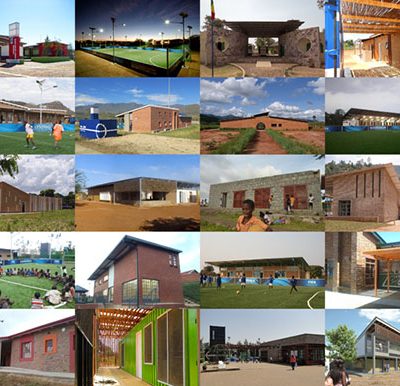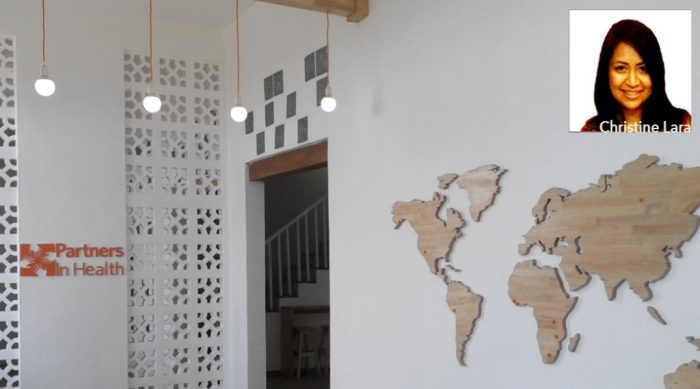Alumni Spotlight: Christine Lara
Woodbury University alumna Christine Lara graduated from the Bachelor of Architecture program (BArch) in 2003. She currently works as the director of infrastructure at Partners In Health in Liberia, a non-profit organization whose mission is to provide a preferential option for the poor in health care. She is co-responsible for projects in clinical and operations infrastructure and is currently designing a new hospital in the southeast region of Liberia. Previously, she worked on projects across Africa and Asia with Architecture for Humanity, MASS Design, and Build Change.
Interview with Christine Lara
What do you consider to be your greatest accomplishments both personally and professionally?
I’m proud to be part of a diverse array of practitioners (many of whom are women!) who have pioneered an inclusive way to practice architecture. While we often lose more battles than we win in this kind of work, I get to travel, live in incredible places, and work alongside some of the finest people on the planet. After grad school (I’m currently in business school in South Africa) my dream is to set up a global architectural residency that draws parallels from the public health sector, I think this is going to be my greatest accomplishment.
How did your time in the Bachelor of Architecture program at Woodbury University help you to pursue your work?
We were lucky in that we were exposed to passionate practitioners like Teddy Cruz; Norman Millar, who was my thesis advisor; Jennifer Siegel, who encouraged us to pick up a hammer; Paulette Singley, who taught me how to communicate my wild ideas; Nick Roberts, who showed us quiet leadership; and Jeanine Centouri, who introduced us to community design. I was also the US representative of the Council of Latin American Students in Architecture (CLEA) during my third and fourth year, and it transformed my view of the world, gave me wings, and ignited my passion for social impact work.
What do you like best about working in the development sector?
Since many of the contexts that we work in are still developing and hence flexible, its inhabitants/our clients are excited by new ideas and typologies. At the moment, I’m personally responsible for a team working in post Ebola Liberia (West Africa) trying to do impossible things like build a new hospital where simple infrastructure does not exist. This environment rarely has any standard operating procedures, access to materials, and much of the labor force is unskilled. If you are an optimist like me, you see this as an opportunity to build capacity, innovate and transform the local economy. Each project I’ve been involved in leaves this incredible legacy.
What projects have you worked on that you’re most proud of?
I’m a proud alumni of Architecture for Humanity, MASS Design, and Build Change, all pioneers of the sector from whom I’ve learned a great deal from. My favorite project will always be building the Butaro Hospital in Rwanda with MASS Design, it is an incredible piece of architecture. And through the project I was introduced to my current employer, Partners In Health. During the height of the Ebola outbreak in West Africa, Partners In Health asked me to help them rebuild the health infrastructure in Liberia, I signed on for six months and now I’m the director of infrastructure and poised to build the second hospital of my career. I blame that on Paul Farmer, one of our beloved founders.
 What have been the biggest challenges in your career? Did your experiences at Woodbury University help you to overcome the obstacles you’ve faced?
What have been the biggest challenges in your career? Did your experiences at Woodbury University help you to overcome the obstacles you’ve faced?
My biggest challenge was to quiet that voice of reason and follow my gut to pave an unconventional path for my body of work. Woodbury taught me that an unconventional path was okay. Pioneers, Architecture for Humanity, opened their design fellowship program right around the time I graduated from Woodbury, but I had no experience and very few stamps in my passport that justified my suitability for an international placement. So I moved to Boston instead and worked for a firm that would allow me to manage my own projects. As soon as I had four years in the private sector under my belt, I moved to East Africa with 2000 dollars in my pocket and a small grant from Kodak, and I haven’t looked back. I eventually managed to work on a project with Architecture for Humanity in 2009 in South Africa and have been blessed to work with so many incredible people and many other organizations along the way.
What advice would you give to younger alumni or current students who aspire to follow a similar career path?
While mainstream architects and design professions are enticing, steward the path and body of work that moves you most. Sure, earn your stripes, gain solid practical skills, but keep your eye on the future plan and then tackle it with a vengeance.
What would you say to a prospective student who is considering Woodbury University?
I’d tell them to spend a day in the studios, find professors who will inspire them, and check out the extracurricular activities. These can help forge your path as much as your education will.
What is your lasting impression of studying architecture in the Bachelor of Architecture program at Woodbury University?
I’m not the kind who lays out a million options and takes the best one, I’m notorious for choosing something and gunning it. When I chose Woodbury, that’s how it went down. Woodbury provided me with a solid foundation, was just the right amount of wild, and it gave me a roaring welcome that forced me into maturity but was forgiving when I didn’t exactly comply.
Describe Woodbury University in 3 words.
Diverse. Innovative. Supportive.
Images courtesy of Christine Lara
